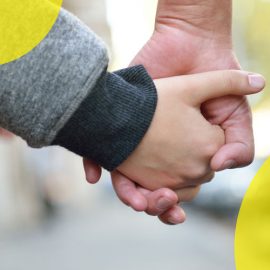Substance Use Disorder: Treating Withdrawal Symptoms with Medical Cannabis
Using medical cannabis to treat … a cannabis use disorder? While the concept might seem counterintuitive, preclinical research and evidence from clinical trials suggest targeting the endocannabinoid systems may in fact be a viable therapeutic strategy to treat Substance Use Disorders (SUD), including cannabis use disorder.
Substance Use Disorder is defined as problematic patterns of substance consumption that lead to impairment and distress. According to a 2012 study, more than 21% of Canadians meet the criteria for a substance use disorder at one point in their lifetime.
Alcohol (18%) and tobacco (16%) are the two most common substance use disorders among Canadians, while nearly 7% of Canadians are thought to abuse or have developed a dependence to cannabis. Opioids meanwhile were responsible for more than 25% of all drug overdose deaths worldwide in 2017. Over 9,000 people have died from opioid overdoses in Canada since 2016.
While it is important to remain cautious about the risks of cannabis use disorder in this patient population, carefully developed and closely monitored medical cannabis treatment plans can be an option for those who are struggling to manage cravings and other symptoms of withdrawal.
SUBSTANCE USE DISORDER AND THE ENDOCANNABINOID SYSTEM: CBD & THC
The role of cannabinoid receptor CB1R in the modulation of dopamine activity is the basis for using medical cannabis as a possible treatment option for SUD.
“The ECS, by direct CB1R activity, modulates and is modulated by mesolimbic[dopamine] activity […] It is thus thought that the disruption of endocannabinoid signaling may prove effective in treating SUDs”. (Chye et al. 2019)
Both preclinical and clinical studies indicate that CBD has the potential to help relieve withdrawal symptoms like convulsions, as well as reduce cravings and drug intake. Trials have found that CBD may also attenuate the impulsive discounting of delayed rewards, which may help diminish the risks of relapse in substance users who are already in remission.
In a short article for Neuropsychopharmacology, Friedbert Weiss and Gustavo Gonzalez-Cuevas suggest that CBD may also be an advantageous treatment for SUD due to its efficacy with multiple substances, including cocaine, opiates, cannabis and alcohol.
According to Weiss and Gonzalez: “Since co-abuse of opiates and cocaine with alcohol is common, the reported anti-reinstatement actions of CBD across three major classes of abused drugs further add to the putative treatment drug promise of this phytocannabinoid”
Since CBD has a low potential for abuse, it may be aninteresting option for patients who might bet at moderate risks of developing a Cannabis Use Disorder.
THC also shows some promise in the treatment for SUD, particularly for the treatment of opioid use disorder.
Preclinical evidence suggests the use of THC-based pharmacological products like nabiximols and dronabinol could help mitigate the severity of precipitated opioid withdrawal. Researchers posit the mechanism for this process could be a result of cannabinoid agonists like THC modulating opioid signaling in noradrenergic cells of coeruleo-cortical pathways.
OUR CLINICAL EXPERIENCE
The two most common administration methods in clinical trials for SUD were oral administration of ingestible CBD oil, dronabinol or nabilone capsules and oromucosal sprays like nabiximols.
Conversely, Santé Cannabis’ clinical experience prefers the use of ingestible oils and nabilone over nabiximols or dronabinol (as it is not available in Canada).
As for CBD, patients at Santé Cannabis tend to be prescribed doses that are significantly lower than the typical dose found in existing clinical trials. For instance, most clinical trials used doses of more than 100mg of CBD, but most patients take daily doses lower than 100 mg CBD at Santé Cannabis. CBD-rich products are expensive, therefore CBD daily dose is not increased further than 100 mg if there is no benefit and if the patient cannot afford it.
Nabilone doses in clinical research studies also ranged from 6 to 8mg/day, whereas the maximum dose of nabilone prescribed at Santé Cannabis was 6mg per day.
Approaches to treating substance use disorders have sought shed taboos about addiction and dependence, and prioritize interventions like behavioral therapy and pharmacological treatments.
CBD, SUBSTANCE USE DISORDER & YOUR PRACTICE
At Santé Cannabis we work alongside patients to help them achieve their desired health outcomes, including assessing if medical cannabis is an appropriate medication and ensure that they are receiving the correct dosing. We have developed dosing instructions and titration charts, and we modify these for our individual patients using our years of experience while considering findings coming from recent research.

Interested to learn more about CBD and the correct dosing for your patients, but not sure how especially during COVID-19? We offer a training program for Quebec doctors, available online, free of charge, including learning modules, webinars, and virtual preceptorships. Registered doctors also have access to our support line with direct calls to our knowledgeable nursing team.



